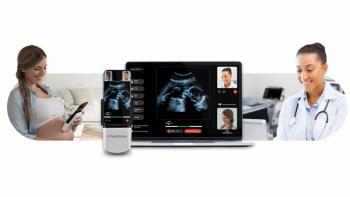
Ultrasound can detect aneuploidy, structural fetal anomalies in first trimester
Not only is it possible to detect aneuploidy and structural fetal anomalies with sonography during the first trimester, but doing so allows for better treatment options, according to a study published in the Journal of Ultrasound in Medicine.
Not only is it possible to detect aneuploidy and structural fetal anomalies with sonography during the first trimester, but doing so allows for better treatment options, according to a
The standard of care is that aneuploidy can be detected in the second trimester, but it is becoming increasingly clear chromosomal anomalies are identifiable in the first trimester. The current study adds evidence that structural anomalies are identifiable as well.
In their retrospective review led by Dr. Reem Abu-Rustum from the
They included 1370 fetuses in their study and found six cases of aneuploidy were detected, five of which were picked up in the first trimester and later confirmed by karyotype. The researchers found 36 cases of structural fetal anomalies, 16 of which were picked up in the first trimester and later confirmed by second- and third-trimester scans.
“If termination of pregnancy is an option, then the earlier it is accomplished, the less the maternal risks,” Abu-Rustum said. “On the other hand if termination is not elected, then the first-trimester scan now provides invaluable information about the natural lethality of certain conditions.”
In some cases fetuses with certain anomalies will die spontaneously in utero.
“The first-trimester scan is fast becoming a pillar in obstetric care,” Abu-Rustum said. It is beginning to shape the future of prenatal care and the way physicians practice, Abu-Rustum added.
This study demonstrates the possibility that appropriately performed ultrasound in the first trimester could be used to detect aneuploidy earlier than other screening methods such as amniocentesis, said Dr. David Bahner, ultrasound director and an emergency medicine physician at Ohio State University in Columbus.
“The question becomes whether this should be done routinely and what is the appropriate training to perform these types of scans,” he said.
Newsletter
Stay at the forefront of radiology with the Diagnostic Imaging newsletter, delivering the latest news, clinical insights, and imaging advancements for today’s radiologists.



























